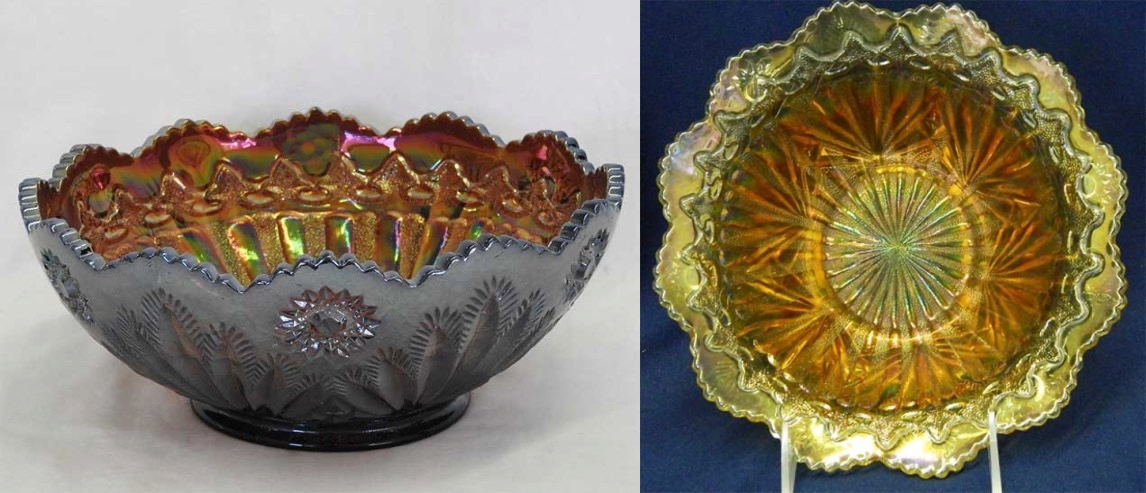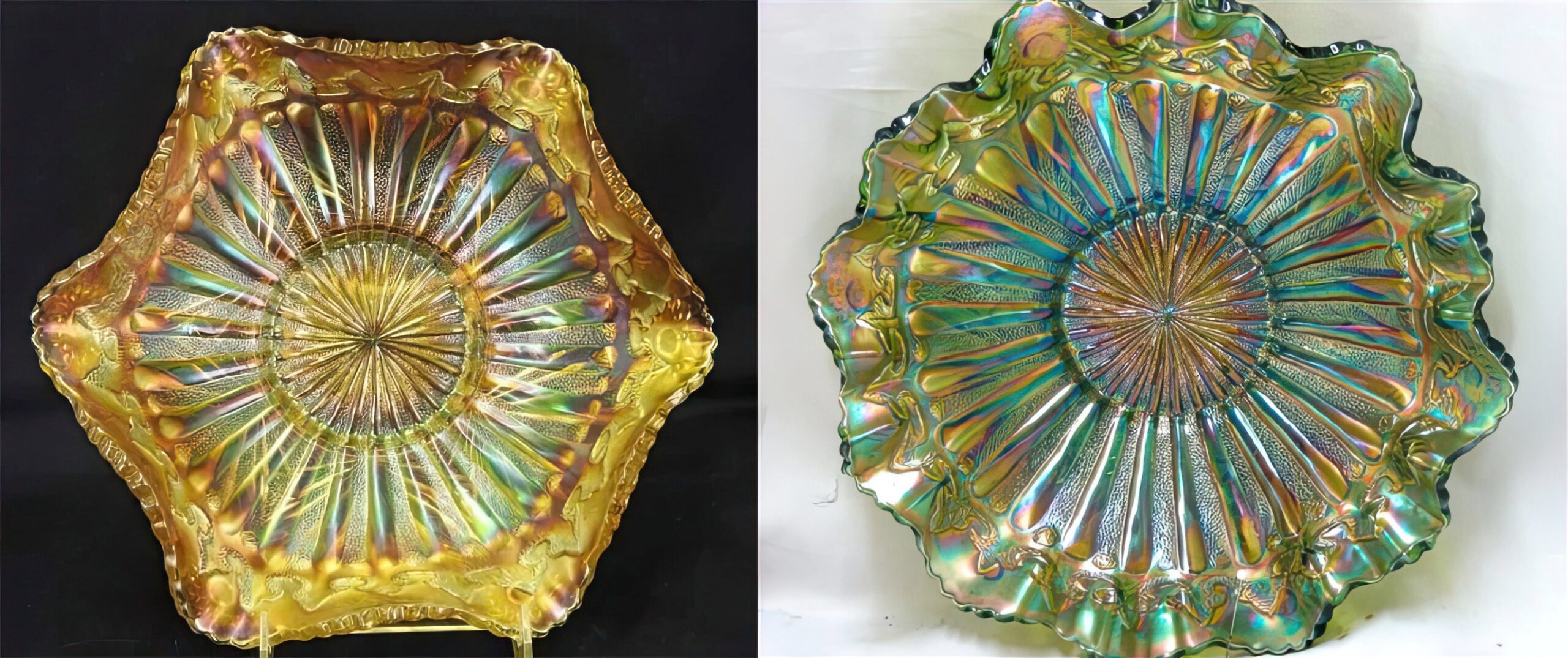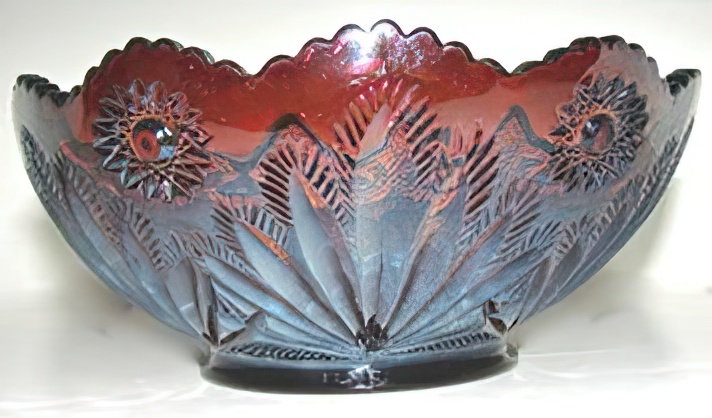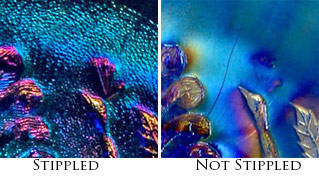Millersburg Rays and Ribbons
By Barb Chamberlain
It is easy to determine how the Rays and Ribbons pattern was named by the early pioneers of carnival glass. Mrs. Hartung named the pattern Rays and Ribbons, while Mrs. Presznick named it Ribbons and Rays Stippled. There are stippled rays radiating from the center that end just short of the edge where little ribbon bows circle the outside edge. Generally, most Millersburg bowls have an exterior pattern, and in the case of Rays and Ribbons, the exterior pattern is Cactus.
Basically, this pattern was made only in the bowl shape. As many of you know, Millersburg was very proficient at using the molded bowls and shaping them in interesting ways. Ruffled, ice cream shape, and three‐in-one shapes were more of the norm.
The proof, or round, bowl, shown above left, shows off the simple, but elegant pattern to the fullest. The bowl on the right has the sides flared slightly at the top.
The usual colors of marigold, amethyst, and green are the known colors for these bowls. A three‐in‐one blue bowl sold at the Galen and Kathi Johnson auction and has been the only one to this point to sell.
As you most likely know, vaseline is a very rare color for Millersburg. In each of the three easiest to find bowl shapes of Rays and Ribbons – ruffled, three‐in‐one, and ice cream (or round shape), one vaseline bowl has been found in each shape.
The marigold ruffled bowl, left, features nice pinks and yellows in the iridescence. The other more common Millersburg bowl shape, the three-in‐one green bowl is shown above right.
Square bowls and rosebowls, with the top edge just slightly turned in, would be good finds. Neither are known in abundance. Bowls were occasionally made where the edge was flared out to make it look like a vegetable bowl shape. Sometimes bowls were flared and then the outside couple of inches were flattened by the finisher. A single green oval bowl is known—this had two edges pushed up while the glass was still available.
Another shape shown here could be what some would call a proof bowl which probably came directly from the mold in this shape with no extra treatment done by the finisher. Even though it seems redundant, these carnival bowls are called round.
The proof, or round, bowl allows the back pattern, Cactus, to show to its best advantage.
Two views of the flared and flattened edge are shown above, compliments of eBay seller parkavenueantiques, Teresa Talley.
Top on the list of desirable pieces to find would be the Rays and Ribbons chop plate. This would have been flattened from the proof, or round, bowl. It may have been spun to attain the flatness, and the paddle might have been used by the finisher to maintain this flat shape. At this time only two of these chop plates are known, an amethyst and a vaseline.
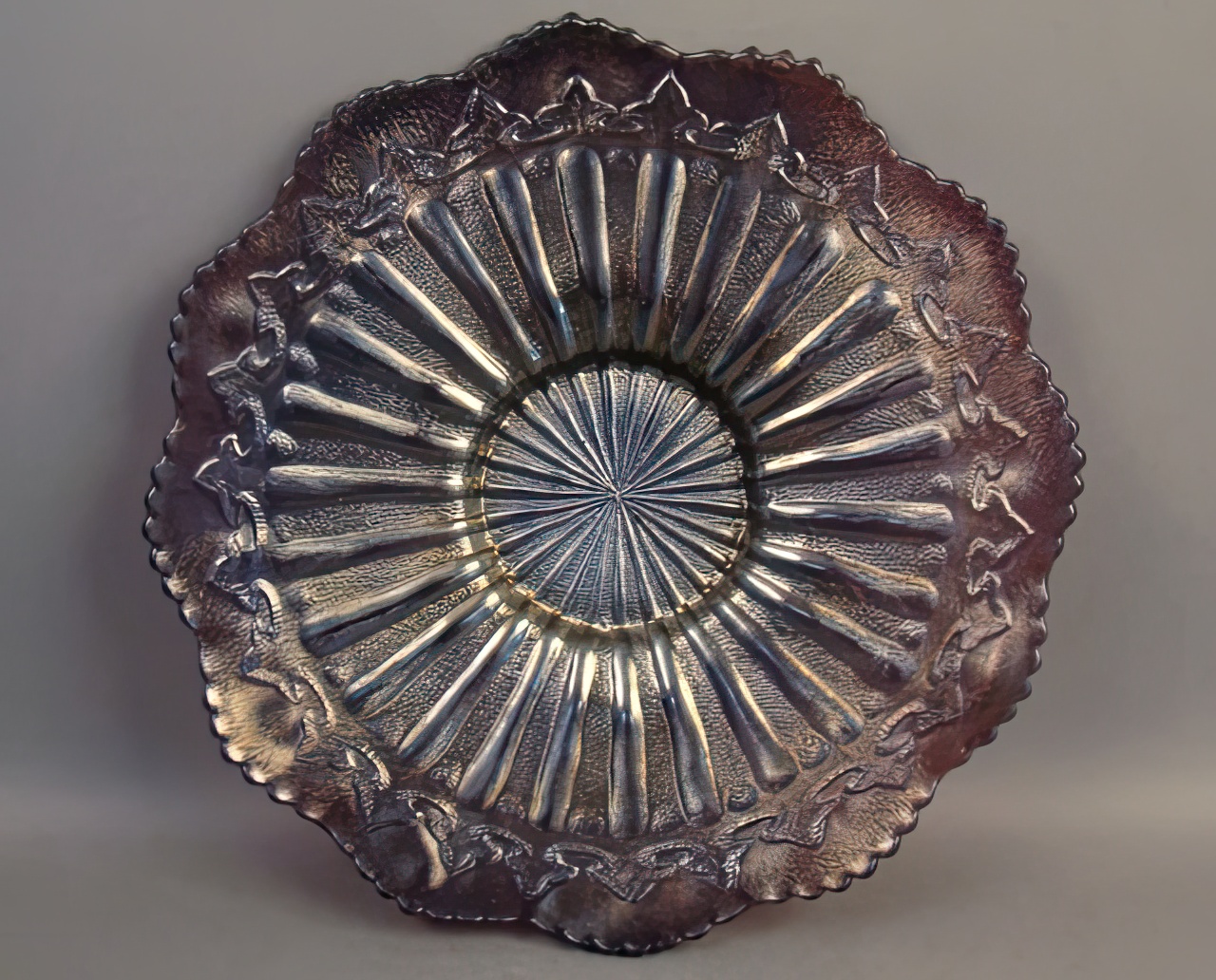
The prize of the Rays and Ribbons pattern would be a chop plate. Photo courtesy of Dave Doty.
If you have additional shapes or colors, please write me with a photo, if possible, at dbcham@iowatelecom.net or 124 E. Honey Creek Dr., Manchester, IA 52057. I would like to include any new information in a future copy of The Carnival Pump.
This article first appeared in the ICGA Pump in the September 2016 issue and is reprinted with permission.

